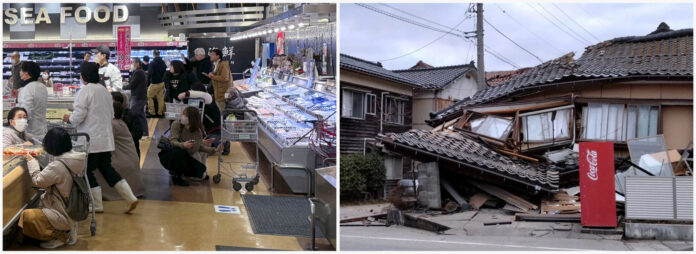Japan, renowned for its seismic activity, finds itself in a race against time as a staggering 155 earthquakes have shaken the nation since Monday, leaving at least 20 people dead and numerous others injured. The series of quakes has triggered concerns about infrastructure stability, emergency response capabilities, and the overall resilience of the affected regions.
Chronology of Events:
The seismic unrest began on Monday with a moderate tremor, but it quickly escalated into a series of quakes, ranging from mild to intense. The affected areas, spanning several prefectures, are grappling with the aftermath, with each new quake exacerbating the challenges faced by local authorities and emergency services.
Human Toll:
As the tremors persist, the human toll continues to rise. At least 20 people have lost their lives, and the number is expected to increase as rescue and recovery efforts are hampered by ongoing seismic activity. The injured are being treated in overwhelmed hospitals, placing additional strain on the already stretched healthcare system.
Infrastructure Challenges:
Japan’s robust infrastructure is facing unprecedented challenges due to the frequency and intensity of the earthquakes. Reports of damaged buildings, collapsed bridges, and disrupted transportation networks have surfaced, raising concerns about the resilience of structures designed to withstand seismic events.
Evacuations and Shelter Operations:
In response to the ongoing seismic activity, authorities have ordered evacuations in high-risk areas, further complicating the task of managing displaced populations amid the COVID-19 pandemic. Emergency shelters are being set up, but the dual challenge of providing safety and preventing virus transmission adds an extra layer of complexity to relief efforts.
Emergency Response and Coordination:
Japan’s renowned emergency response capabilities are being put to the test. The government has mobilized rescue teams, including the Self-Defense Forces, to affected regions. However, the sheer scale and ongoing nature of the seismic activity are straining resources and coordination efforts, prompting calls for international assistance.
Technological Innovations and Early Warning Systems:
Japan has been a pioneer in developing advanced earthquake early warning systems, yet the recent surge in seismic activity highlights the need for continuous improvement. Researchers and engineers are already analyzing data to enhance predictive models and improve the accuracy of early warnings, underscoring the importance of technological innovations in mitigating the impact of natural disasters.
Global Solidarity and Assistance:
As Japan grapples with this crisis, the international community stands in solidarity. Offers of assistance and support have poured in from various countries, reflecting the interconnectedness of nations in times of need. Collaborative efforts are underway to provide aid, expertise, and resources to help Japan overcome the challenges posed by this seismic onslaught.
Conclusion:
Japan’s resilience is being tested as it confronts the aftermath of 155 earthquakes within a short span, resulting in loss of life, infrastructure damage, and ongoing emergency response challenges. The nation’s ability to recover and rebuild will not only depend on its own strengths but also on the support and solidarity extended by the global community in the face of this natural disaster.






















